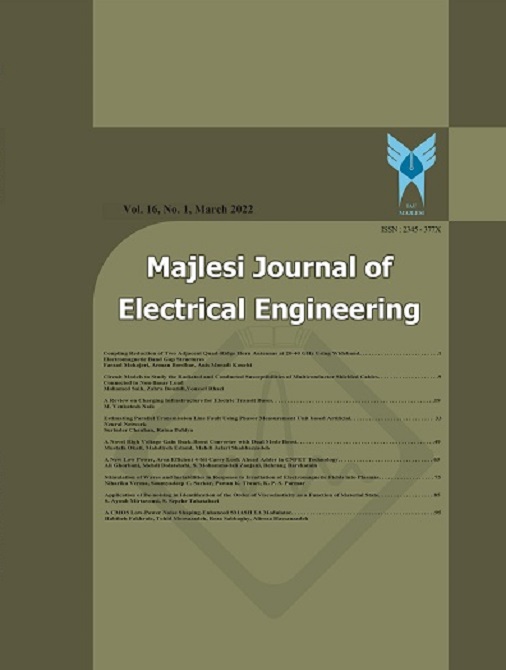[1] JEFERSO JEFERSON M. Corrêa, Student Member, IEEE, Felix A. Farret, Luciane N. Canha, and Marcelo G. Simões “An Electrochemical-Based Fuel-Cell Model Suitable for Electrical Engineering Automation Approach”, IEEE Transactios on Industrial Electronics, Vol. 51, No. 5, Octobr 2004.
[2] G. Naga Srinivasulu, T. Subrahmanyam and V. Dharma Rao: “Parametric sensitivity analysis of PEM fuel cell electrochemical Model”, International Journal of Hydrogen Energy, Science Direct, article in press I-7, 2011.
[3] Kh. Mammar and A. Chaker, “ Fuzzy Logic Control of Fuel Cell System for Residential Power Generation”, Journal ,of ELECTRICAL ENGINEERING, Vol. 60, No. 6, pp. 328–334, 2009.
[4] Kh. Mammar, A. Tahour and A. Chaker, “Active and Reactive Power Control of Fuel Cell System Using a Neural Network Model and Fuzzy Logic Controller”, International Review of Automatic Control (Theory and Applications), May. 2010.
[5] M. T. Outeiro, R. Chibante, A. S. Carvalhoc,d, A. T. de Almeida “A parameter optimized model of a Proton Exchange Membrane fuel cell including temperature effects”, Journal of Power Sources 185, pp. 952–960, 2008.
[6] N. Fouquet, C. Doulet, C. Nouillant, G. Dauphin-Tanguy and B. Ould-Bouamama “Model based PEM fuel cell state-of-health monitoring via ac impedance measurements”, Journal of Power Sources 159, pp. 905–913, 2006.
[7] M. A. Danzer and E. P. Hofer, “Analysis of the electrochemical behaviour of polymer electrolyte fuel cells using simple impedance models”, Journal of Power Sources 190, pp. 25–33, 2009.
[8] J. R. Macdonald and W. B. Johnson, “Impdedance Spectroscopy: Theory, Experiment and Applications”, John Wiley & Sons, pp. 1–26, 2005.
[9] L. Eriksson, E. Johansson, N. Kettaneh-Wold, C. Wikstöm, and S. Wold, “Design of Experiments, Principles and Applications”, Umetrics, 2009
[10] C. R. Hicks and K. V. Turner, Jr., “Fundamental Concepts in the Design of Experiments”, Oxford, U.K.: Oxford Univ. Press, 1990
[11] T. P. Ryan, G. A. Acworth, “Modern Experimental Design”, by John Wiley & Sons, Inc. All rights reserved 2007.

